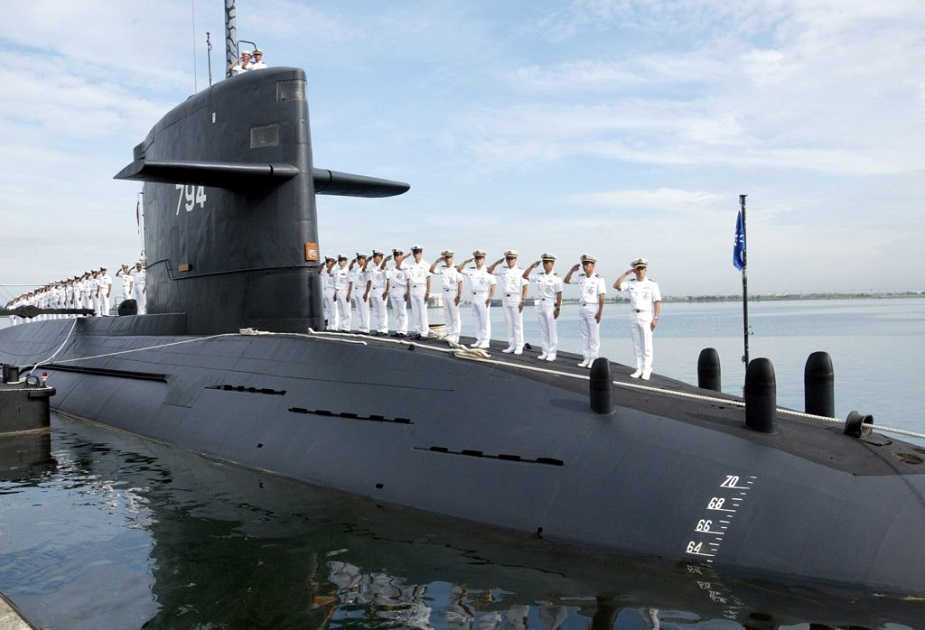By Xavier Vavasseur - Chief Editor
Retired submarine experts from Japan have been invited to Taiwan in September, to train the necessary personnel and present a report on Taiwan’s domestic submarine program. The information comes from English-language daily newspaper Taiwan News, citing reports.

The Japanese experts are said to be retired from Mitsubishi Heavy Industries (MHI) and Kawasaki Heavy Industries (KHI), the two companies who have been building submarines for the JMSDF for decades.
The Republic of China (ROC or Taiwan) Navy said back in July 2016 it has started design work on its domestic attack submarine programme, hoping to complete it in 2024. Navy Command Headquarters Chief of Staff Vice Admiral Mei Chia-shu told a legislative committee session: “We plan to complete the design by 2019 and complete the construction by 2024.”
The submarine programme is part of Taiwan's new naval acquisition plan which was unveiled in late 2015. The ROC Navy also have a Destroyer programme as part of this plan. Under a four-year contract, submarine design work is estimated at Tw$3 billion ($94.46 million). Preparatory work begun last year with an approved budget of Tw$10 million.
Vice Admiral Hsiao Wei-min said in 2015 that "at present the navy's demand is submarines ranging from 1,200-3,000 tons". The builder has not been revealed yet but military sources said it should be given to a team composed of Taipei-based Ship and Ocean Industries R&D Center, the CSBC Corporation Taiwan and foreign technology advisers.
Mei said the ROC Navy signed a contract with a Dutch company to extend the lifespan of the two subs so Taiwan could use the design blueprint as the basis for the construction of the first home-built submarine. In April 2001 then-US president George W. Bush approved the sale of eight conventional submarines as part of Washington's most comprehensive arms package to the island since 1992. Since then, however, there has been little progress. The United States has not built conventional submarines for more than 40 years and Germany and Spain have reportedly declined to offer their designs for fear of offending Taiwan's rival, China.
The Taiwanese navy currently operates two Hai Lung-class submarines — Taiwan’s only combat-ready subs — which were acquired from the Netherlands in the late 1980s.
Q&A with Collin Koh, South East Asia Maritime Security expert
Navy Recognition - Does this move comes as a surprise or would you say it was expected ?
Colling Koh - Not surprising, especially when knowing that Taiwan has long been looking around for foreign assistance with the critical tech areas for its IDS program. The US, according to Taiwanese reports, is much involved as an intermediary for such assistance especially since American yards no longer build conventional subs except provide direct help in key tech areas such as combat management systems. The recent Trump Administration’s moves to elevate defence and security assistance to Taiwan, with a key focus on the tech aspect, helps matters a lot.
Navy Recognition - How signigicant is it for Taiwan's future submarine ambitions ?
Colling Koh. Significant in a way that through the assistance by Japanese vendors, Taiwan’s own domestic industry - especially CSBC Corp. and NCSIST - would be able to gain critical insights into those tech areas that they’ve long wanted to achieve major breakthroughs but failing which, has stifled the IDS program. So the Japanese assistance would help with Taiwan’s building of self reliance in a particularly crucial part of its evolving defense posture and force modernisation.
Navy Recognition - What do you expect China's response will be towards Taiwan and Japan ?
Colling Koh. In recent years there’s an evident uptick in relations between Taiwan and Japan, as seen in agreements reached in contentious issues concerning maritime sovereignty and jurisdiction - especially a fishery agreement in the East China Sea. Taipei also voiced support for both American and Japanese advocacy on the Indo-Pacific strategy. So China’s reaction to this development will be seen in such broader perspectives. In fact, such indirect assistance in building Taiwan’s defense capabilities would add a layer of complexity to already tenuous relations between China and Japan.
I’ve to add that while all appears promising for the IDS program following recent US policy moves, and reported interest and involvement by foreign entities such as those from India and Japan, the project remains short of being wholly assured. End of the day, Taiwan still needs to ensure commitment to its defense needs. This means sustained defense funding, otherwise no matter what foreign assistance is forthcoming, the IDS program may run the risk of being stalled, or even becoming a stillborn. Submarine research and development is typically a long term project that requires both sustained funding, tech and human capital influx, and not least political commitment. The risk margins for submarine programmes are some of the most significant to bear amongst “big ticket” military technological projects.
Collin Koh is a research fellow at the Maritime Security Programme, S. Rajaratnam School of International Studies in Singapore.










